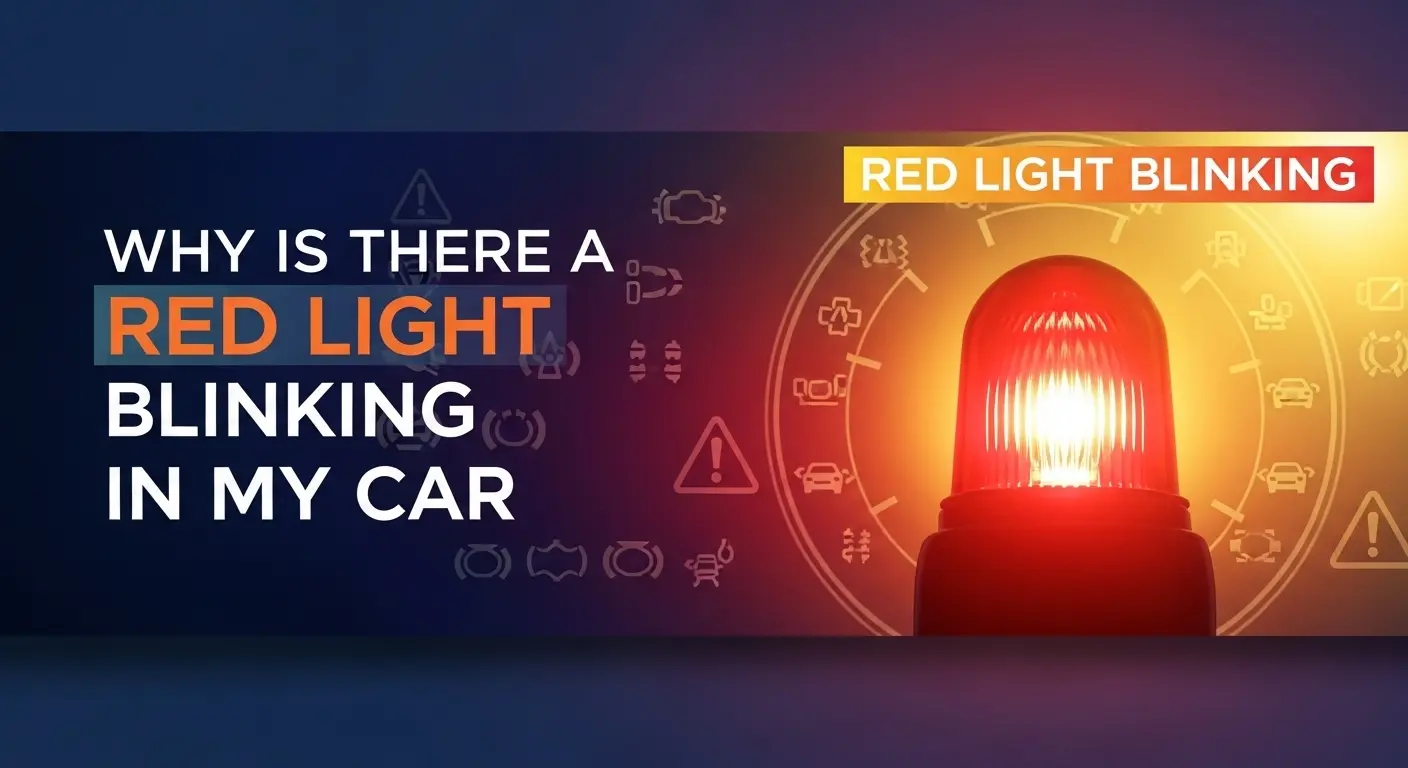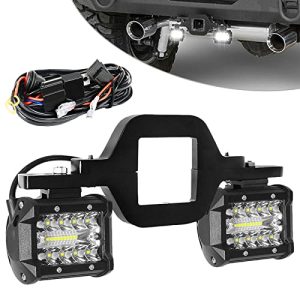You’re driving along, enjoying your day, when suddenly, a red light starts blinking on your car’s dashboard. Panic sets in.
What does it mean? Is your car about to break down? Should you pull over immediately? These are questions that can send your heart racing and your mind into overdrive. That little red light is more than just a tiny bulb; it’s a signal, a warning, and sometimes even a lifesaver.
Understanding what that red light means can save you from potential headaches down the road. It could be alerting you to something minor, or it might be indicating a serious issue that needs immediate attention. But how can you tell? By the end of this article, you’ll not only know what that blinking red light signifies but also how to respond without stress or confusion. Let’s dive in, and take control of the situation before it controls you.
Common Causes Of Red Lights
Seeing a red light blinking in your car can be alarming. It usually signals a problem that needs attention. Understanding these signals can save you from costly repairs. Let’s explore some common causes of red lights in your car.
Engine Warning Light
The engine warning light often indicates engine trouble. It could mean various issues. Maybe a sensor is faulty. Or, the engine is overheating. Always check this light promptly. Ignoring it could damage your engine.
Brake System Alert
The brake system alert warns of brake problems. It may suggest low brake fluid. Or a malfunctioning brake sensor. Check your brakes immediately. Driving with brake issues is dangerous. It risks your safety.
Oil Pressure Indicator
The oil pressure indicator shows low oil pressure. This could mean your oil level is low. Or the oil pump has a fault. Low oil pressure can harm the engine. Regularly check your oil levels. It keeps your engine healthy.

Credit: www.reddit.com
Immediate Actions To Take
Noticing a red light blinking in your car can be alarming. It often signals an issue that needs immediate attention. Taking the right steps is crucial for safety and resolving the problem. Here are some actions you should take without delay.
Safely Pull Over
Your safety comes first. Find a safe spot to pull over. Avoid stopping in traffic lanes. Use your turn signals to alert others. Once parked, turn off the engine. This prevents further damage.
Consult The Owner’s Manual
Your car’s manual is a valuable resource. It explains what different lights mean. Look for the section on dashboard warnings. Follow the instructions given. This could help you understand the issue better.
Contact A Professional
If the problem persists, seek professional help. Call a trusted mechanic or roadside assistance. Describe the situation clearly. They can provide advice or arrange a tow if needed.
Potential Risks Of Ignoring Red Lights
Seeing a red light blinking in your car can be stressful. This signal often points to an issue that needs attention. Ignoring it might lead to serious problems. Understanding the potential risks can help you act quickly.
Engine Damage
A blinking red light might indicate engine trouble. Ignoring this warning can lead to engine damage. Your engine might overheat. It could also stall without warning. Repairing engine damage can be costly.
Brake Failure
Brakes are crucial for safety. A red light could signal brake issues. Ignoring it may result in brake failure. This puts you and others at risk. Regular brake checks can prevent accidents.
Safety Hazards
Red lights often indicate safety hazards. These could be airbag issues or seatbelt alerts. Ignoring them can lead to increased danger. Ensuring safety features work can save lives.
Preventive Measures For Future
Discovering a red light blinking in your car can be unsettling. Knowing how to prevent future issues is crucial. Implementing preventive measures ensures your vehicle runs smoothly. These strategies help avoid unexpected breakdowns and maintain your car’s health.
Regular Vehicle Maintenance
Regular maintenance keeps your car in good condition. Schedule routine check-ups with a trusted mechanic. They check vital systems and replace worn parts. Oil changes are vital for engine health. Clean filters improve performance. Tire rotations extend tire life. Regular inspections detect problems early. This reduces the risk of sudden issues.
Monitoring Dashboard Alerts
Pay attention to dashboard alerts. These signals warn about potential issues. Learn what each light means. Respond promptly to warnings. Check the owner’s manual for guidance. Ignoring alerts can lead to serious problems. Regularly scan your dashboard for unusual signals. This habit keeps you informed about your car’s condition.
Understanding Car Signals
Understanding car signals helps in troubleshooting. Familiarize yourself with common alerts. The red light often indicates urgent issues. Learn basic troubleshooting steps. This knowledge empowers you to act quickly. Consult a professional if unsure. Proper understanding reduces stress and ensures safety. Educate yourself about your car’s signaling system. This knowledge boosts confidence when driving.
Technological Advances In Car Alerts
Have you ever driven home late at night, only to be greeted by a mysterious red light blinking on your car’s dashboard? It’s not just a random occurrence; it’s a testament to the technological advances in car alerts. Modern vehicles are equipped with sophisticated systems designed to keep you informed about your car’s health and performance. These systems are more intuitive and responsive, ensuring you get timely alerts before minor issues turn into major problems. This section dives into how these technological advancements are making our driving experiences safer and more efficient.
Smart Sensor Integration
Today’s cars are equipped with smart sensors that track everything from tire pressure to engine temperature. These sensors are like your car’s vigilant guardians, constantly monitoring the vehicle’s condition. If something is amiss, such as an oil leak or low battery, the sensors trigger alerts. This proactive approach means you can address issues before they escalate. Imagine driving with confidence, knowing that your car is always keeping an eye out for you. Have you noticed how these alerts can sometimes predict a problem before you even feel a change in your car’s performance?
Real-time Diagnostics
Real-time diagnostics are a game-changer for modern vehicles. They provide instant feedback on your car’s status, letting you know exactly what’s happening under the hood. Gone are the days of vague warning lights that leave you guessing. Now, when that red light blinks, you can access detailed information through your car’s onboard computer or smartphone app. This means quicker solutions and fewer surprises on the road. Have you ever wondered how much time and stress you could save by catching issues early?
Enhanced Driver Assistance Systems
Enhanced Driver Assistance Systems (ADAS) are transforming the way we interact with our cars. These systems use a combination of sensors, cameras, and data to provide alerts about potential hazards, such as nearby vehicles or obstacles. They don’t just warn you; they actively assist in preventing accidents. If you’ve ever experienced a sudden alert for lane departure or collision risk, you’ve seen ADAS in action. These systems are designed to keep you safe, even when you’re momentarily distracted. How much peace of mind does it bring to know your car has your back?

Credit: www.youtube.com

Credit: www.plymouthrock.com
Frequently Asked Questions
Why Is The Red Light Blinking On My Car Dashboard?
The red light blinking indicates a problem with your vehicle, such as low oil pressure or battery issues. Check your car’s manual for specific details. Seek professional assistance if unsure about the warning. Ignoring the light can lead to serious damage.
Why Is The Red Security Light Blinking In My Car?
The red security light blinks to indicate the car’s anti-theft system is active. It deters theft by alerting potential thieves. Ensure your key or fob is working properly if it blinks while starting the car. Consult your owner’s manual or a professional if issues persist.
Why Is There A Red Dot Flashing On My Car?
A flashing red dot in your car often signals an anti-theft system activation. Check your vehicle’s manual for details. It can indicate a security issue or alarm system engagement. Contact a professional if unsure or if the light persists. Regular maintenance can prevent false alarms.
Can You Drive On A Blinking Red Light?
A blinking red light means stop and proceed when safe. Treat it like a stop sign. Check for traffic or pedestrians before moving. Always prioritize safety and follow local traffic laws. Ignoring it can result in penalties.
Conclusion
A blinking red light in your car signals an issue. It’s essential to act quickly. Ignoring it could lead to bigger problems. Check the owner’s manual for guidance. This can help you understand the warning. If unsure, consult a professional mechanic.
They can diagnose and fix the problem. Staying proactive ensures your car stays in good condition. Regular maintenance is key. It helps prevent unexpected issues. Safety should always be your priority. Don’t delay in addressing car warnings. Keeping your vehicle in top shape gives peace of mind.
Drive safe and stay informed about your car’s needs.

Ethan Montgomery is the administrator of carweldhub.com and an expert in the automotive industry. With hands-on experience in welding and a deep understanding of automotive parts and accessories, Ethan brings a wealth of practical knowledge to his work. His passion for the automotive field extends to blog writing and editing, where he shares valuable insights and tips with enthusiasts and professionals alike. Whether you’re looking for detailed technical advice or the latest trends in automotive technology, Ethan’s expertise makes him a trusted resource in the automotive community.




